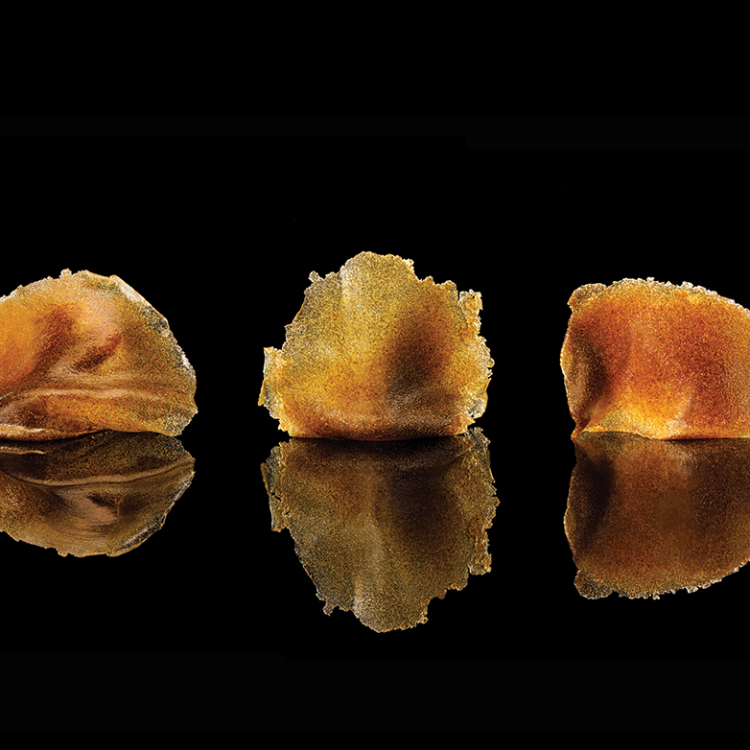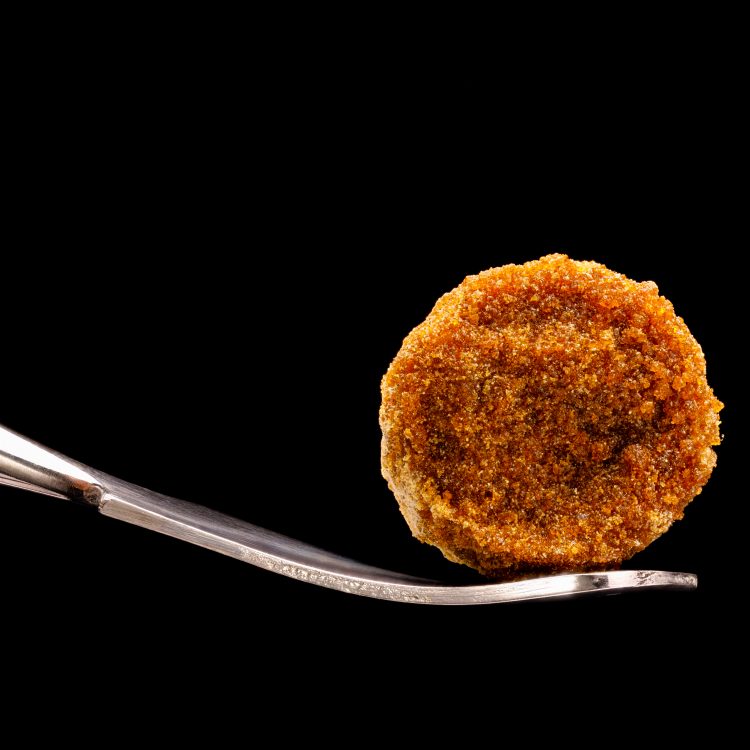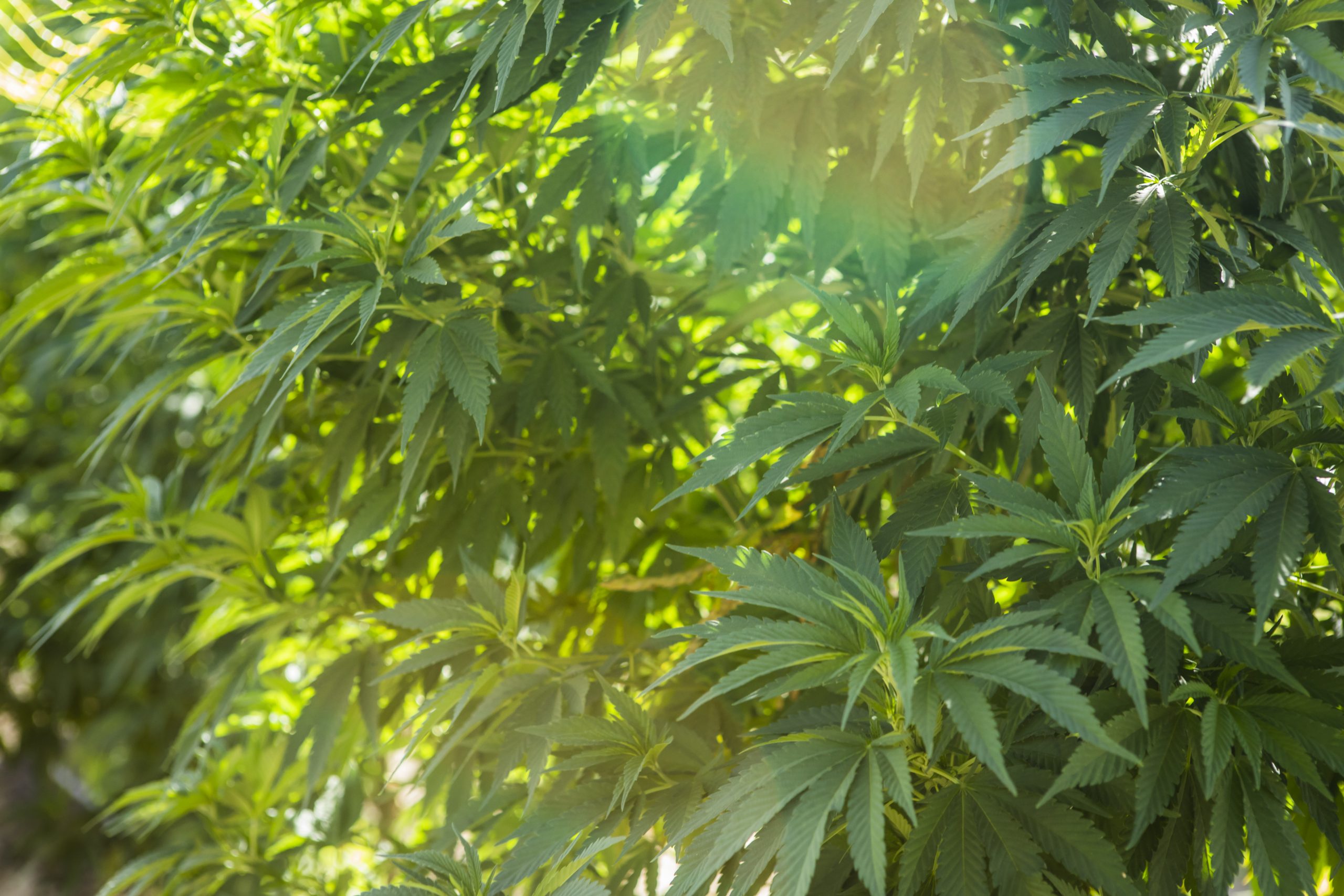
Electron Beam Treatment on Dried Cannabis Flowers
Daniel Lantela1, Brishna Kamal2
Objective:
To determine if Electron Beam treatment changes the levels of cannabinoids, heavy metals, pesticides, and aflatoxins in dried cannabis for determining what tests need to be repeated after processing by electron beam treatment.
Methods:
14 Samples of dried cannabis were sent to Anandia Labs to be tested. Samples from the same 14 lots were processed by Electron Beam treatment (4 – 4.5 kilo Grays) and then sent for testing again after 0-9 months of time post-processing. Cannabinoids tested by Validated Cannabinoid testing performed using Ultra-High-Performance Liquid Chromatography coupled with Mass Spectroscopy detection (UPLC-MS/MS), Heavy Metals tested by Microwave Digestion and ICP-MS detection (USEPA 6020A R1 2007), Pesticides tested by Anandia’s pesticide screen is performed using (LC-MS/MS). Analyzed for 56 pesticides, fungicides and PGRs. [Anandia Method: AL-407 v1] and Alfatoxins tested by Immunoaffinity column chromatography followed by analysis with UPLC-MS/MS.
Results:
None of the original 14 samples tested positive for either pesticides or aflatoxins, and none of the samples post-treatment tested positive. These results demonstrate that electron beam treatment does not cause the spontaneous creation of complex organic molecules such as pesticides or aflatoxins. After electron beam treatment, it is not necessary to test again for pesticides or aflatoxins.
Of the 14 samples, none had heavy metals above the limits set by the European Pharmacopeia and none of post-treatment did either. There were variances between the test samples which were not below the limit of quantification. The average of these test samples was ~2% and when put into a box plot, it shows that the 95% confidence interval contains 0% variance with an average close to zero. This data shows that any testing change was due to regular testing variance, and electron beam treatment did not change heavy metals amounts in any significant way. The box plot of these testing variances is illustrated in Figure 1 below.
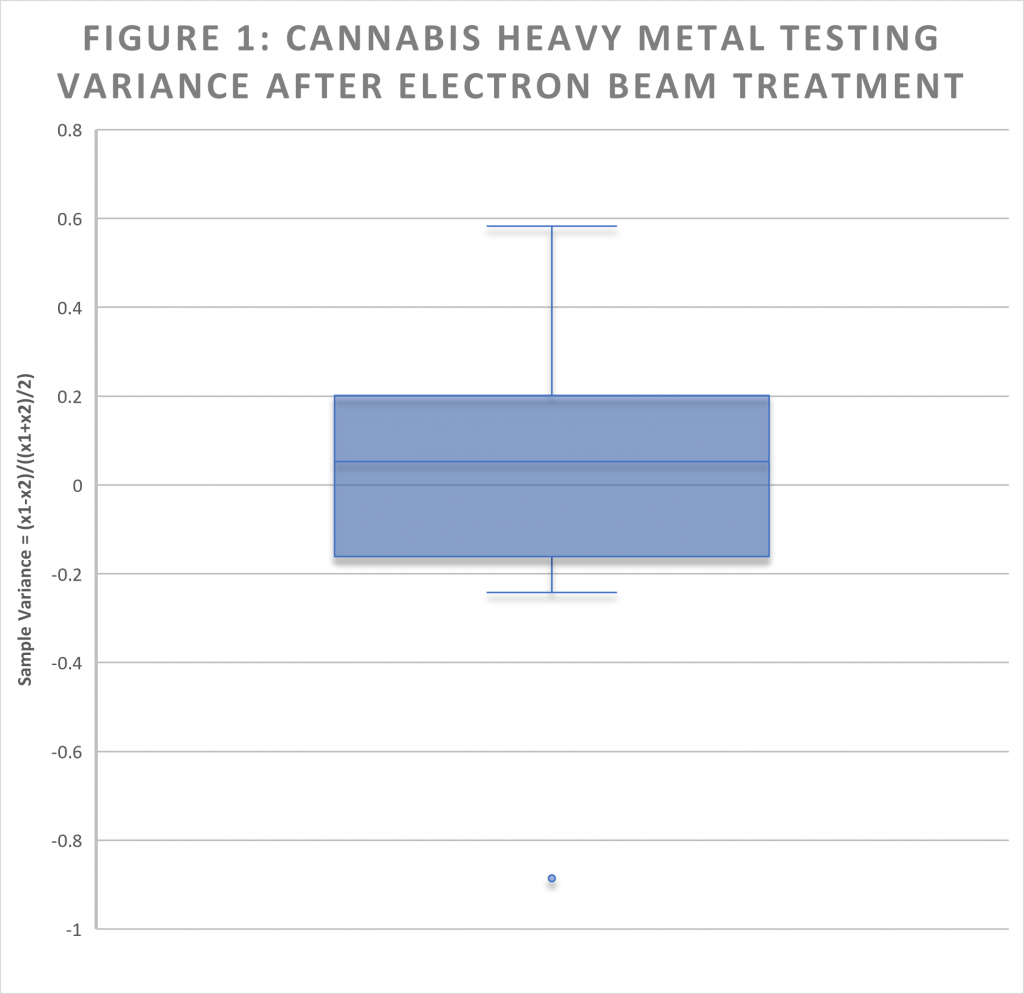
Cannabinoid testing showed little variance directly after cold pasteurization by electron beam treatment, however, samples that were kept in the vault for many months after treatment showed some decline in cannabinoid content which became significant after many months in storage. We do not have enough stability data collected, however, to determine if this decline was due to the electron beam treatment or was comparable to untreated material.
According to Anandia Labs Validation, if the inter- test variance is less than 15% on a single test, it does not indicate any statistically significant difference, and the variance can be due to regular testing variance1. We do not have any data for CBD strains, but THC% testing variance directly after electron beam treatment shows no samples over the 15% threshold, and again 0% variance is seen in the box plot (figure 2) 95% confidence Interval showing that here was no statistically significant difference in potency within one week of Iotron Treatment.
Table 1: Total Potential THC Levels One Week Post Electron Beam Treatment
| Lot/ Sample | Original Av. THC% | Post EM THC % | Variance | >15%? |
| P090 | 21.2 | 20.5 | 0.033573 | Yes |
| P107 | 15.5 | 14.9 | 0.039474 | Yes |
| P109 | 14.5 | 15 | -0.0339 | Yes |
| P111 | 20.1 | 20.2 | -0.00496 | Yes |
| P123 | 18.3 | 17.5 | 0.044693 | Yes |
| P129 | 19.7 | 18.5 | 0.062827 | Yes |
| P140 | 20.1 | 20 | 0.004988 | Yes |
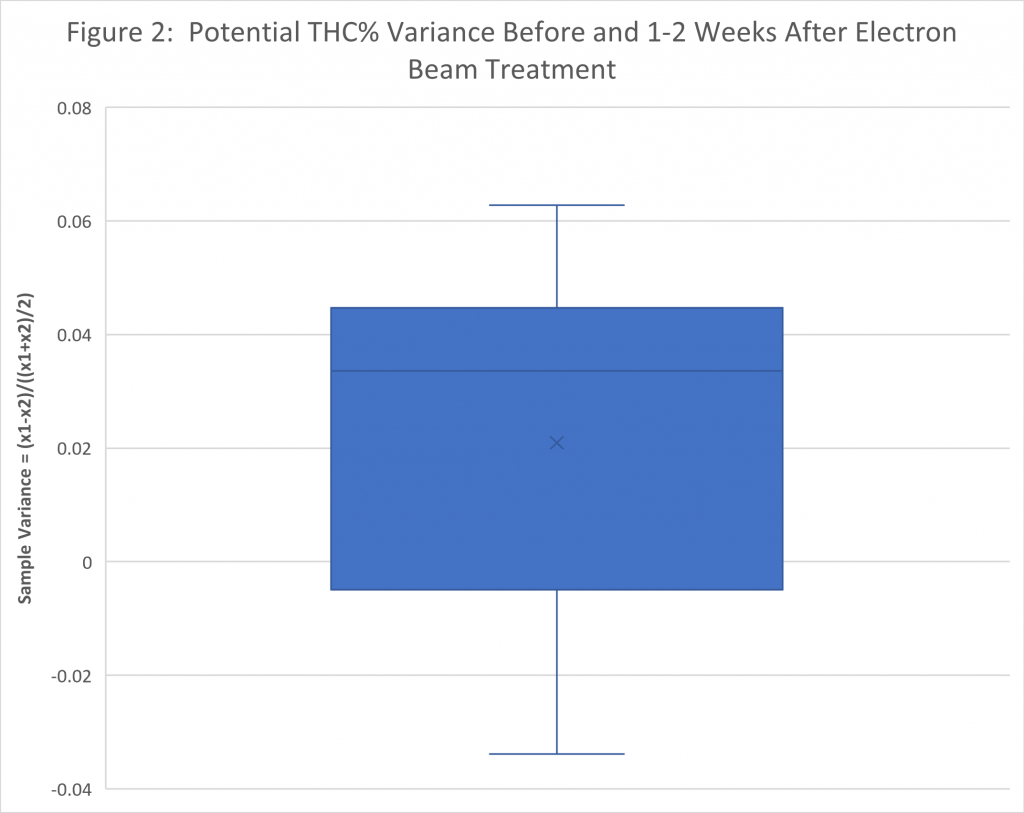
Cannabinoid testing performed 2-9 months after EB treatment indicated that there may be degradation of cannabinoids over time. The average variance is not over the 15% threshold, so the differences could be due to regular testing variation, however they may also indicate a trend. Without not-treated controls, we cannot determine if this trend is from the electron beam treatment or a regular degradation of cannabinoids. Table 2 shows testing values, variance and days after treatment for THC testing before and after electron beam treatment. Figure 3 shows a box plot of these variances, and figure 4 shows a graph of time after treatment vs testing variance.
Table 2: Potential THC% Testing Variances 2-9 Months Post Electron Beam Treatment
| Lot/Sample | THC% Before Treatment | THC% After 2-9 months post EB | Variance | Days post EB |
| P092 | 19.05 | 18.7 | 1.854305 | 267 |
| P094 | 15.65 | 14.61 | 6.873761 | 254 |
| P095 | 15.57 | 13.88 | 11.47708 | 254 |
| P096 | 16.31 | 15.17 | 7.242694 | 254 |
| P097 | 22.96 | 20.34 | 12.10162 | 254 |
| P098 | 5.38 | 4.95 | 8.325266 | 175 |
| P106 | 19.88 | 18.26 | 8.495018 | 175 |
| P107 | 15.51 | 14.82 | 4.549951 | 179 |
| P109 | 14.6 | 11.8 | 21.21212 | 175 |
| P123 | 18.52 | 17.5 | 5.66352 | 77 |
| P129 | 19.43 | 18.5 | 4.90377 | 66 |
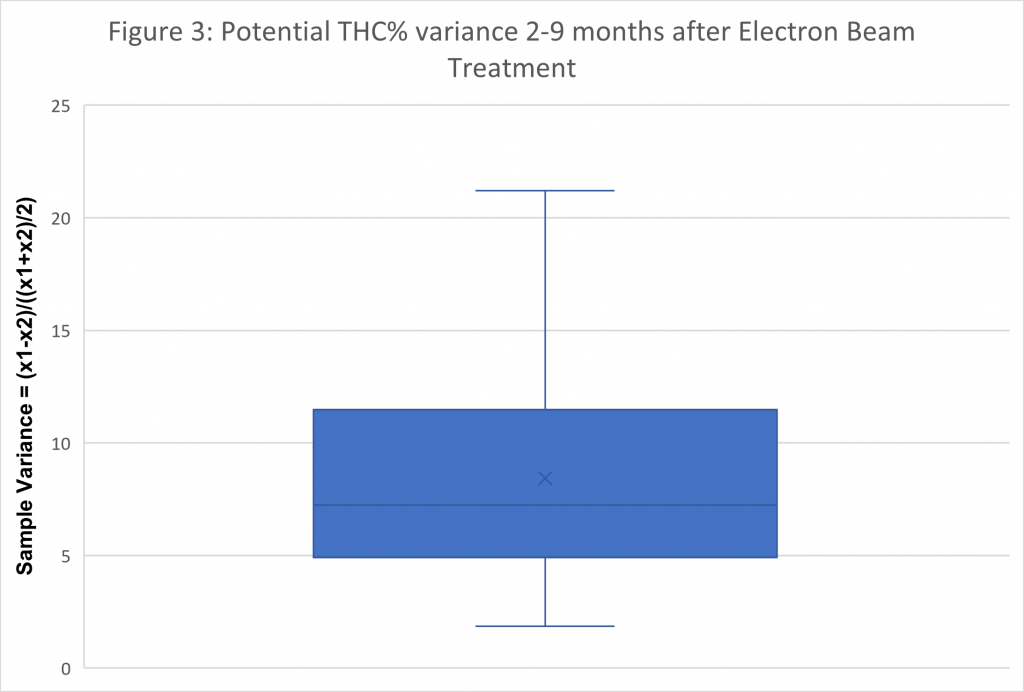
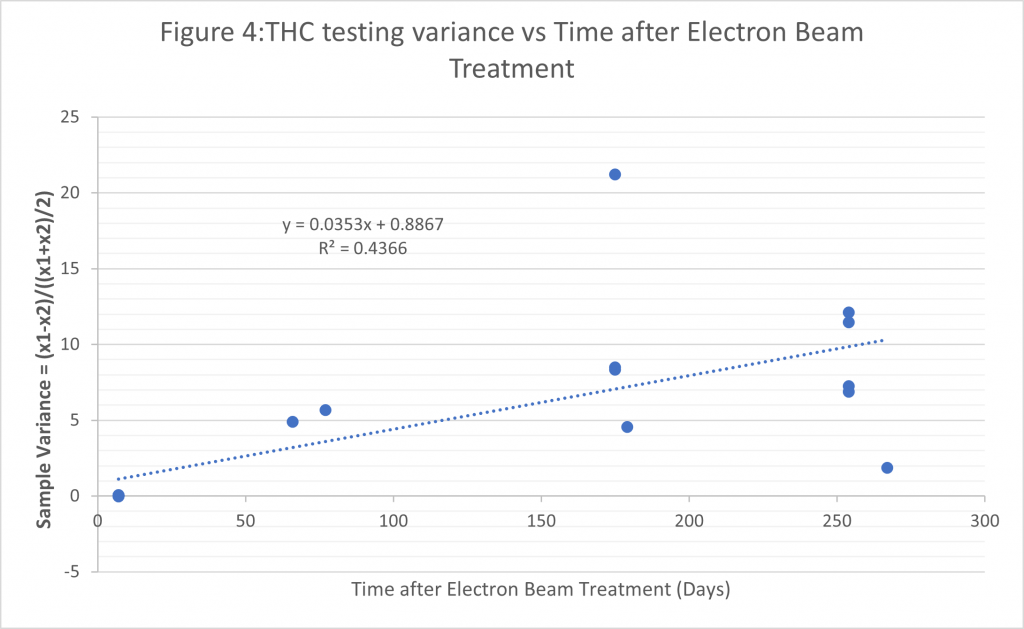
Discussion:
The results from pesticide testing, aflatoxin testing and heavy metal testing show no difference between pre and post electron beam treatment samples. Further testing of these substances is not required after treatment.
Cannabinoid levels were not significantly different one week after electron beam processing as shown in Figure 2. However, the data indicates that these levels may decline over time. Figure 4 shows a linear decline in cannabinoid levels after treatment, however with a poor R2 value of 0.4366. Further testing is needed to determine if this is a real effect or an artefact of testing variance. Figure 3 suggests that after many months there may be a decline in potency, however, even after one year, the variance is still less than the label claim range allowed (80-120%). These results indicate that cannabis held for a long time after treatment should be re-tested every 6 months to determine if it is still in the same potency range.
These results are only for THC since we only had one strain with significant CBD treated and therefore not enough samples to make a comparison. We expect CBD to follow a similar profile.
Conclusion:
Directly After electron beam treatment, it is not necessary to re-test samples for heavy metals, pesticides, aflatoxins or cannabinoids as the levels do not change significantly. However, re-testing the cannabinoid potency after 6-12 months would be advisable to see if the potency has significantly degraded. Further study is needed to determine if this degradation is due to electron beam processing or happens in untreated cannabis.
References:
- Anandia Labs Validation Data, page 6.





